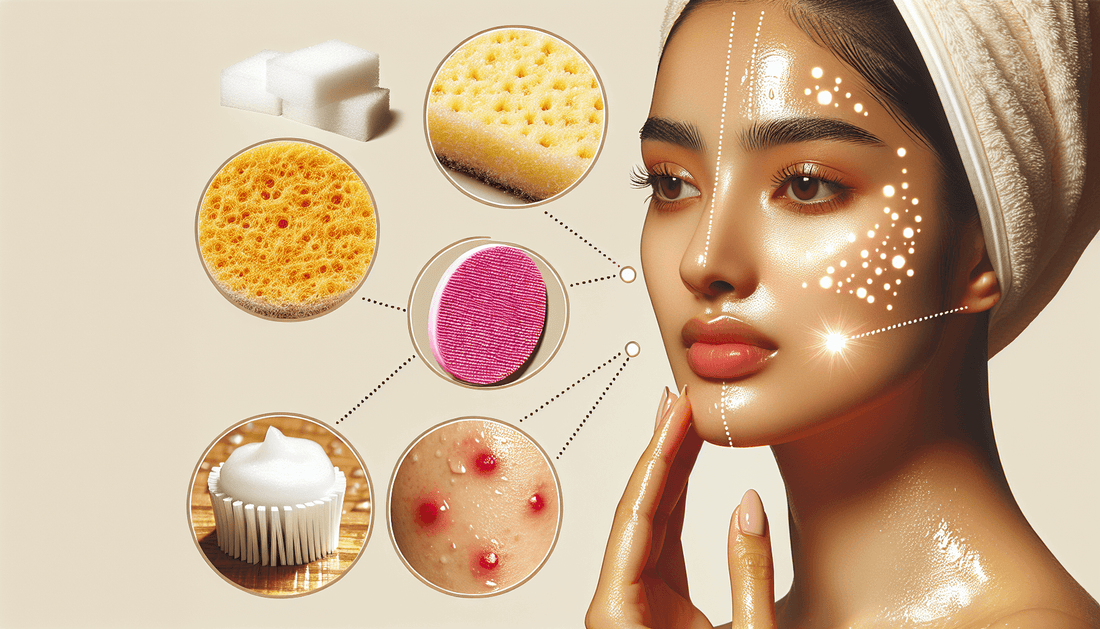
5 Common Skincare Mistakes and How to Avoid Them
Share
Understanding Common Skincare Mistakes
We've all been there – standing in front of the bathroom mirror, examining our skin and wondering why that expensive serum isn't working its magic. The truth is, even with the best products on your shelf, your skincare routine might be sabotaging your efforts without you realizing it. Let's unravel some widespread skincare blunders that might be hindering your journey to that coveted radiant complexion.
The Science Behind Skincare Missteps
Your skin is your body's largest organ, with its own intricate ecosystem. When we disrupt this delicate balance through improper practices, we can trigger a cascade of unwanted reactions – from inflammation to compromised barrier function. Understanding the physiological impact of these common errors can help you make informed decisions about your daily regimen.
"The skin remembers every aggressive treatment and environmental insult. What seems like a quick fix today may manifest as premature aging tomorrow." – Dr. Amina Khalid, Dermatologist
Over-Exfoliation: When Too Much Is Harmful
That tingling sensation after scrubbing might feel satisfying, but excessive exfoliation can strip your skin of its natural protective oils. This dermal destruction creates micro-tears in the skin's surface, potentially leading to inflammation, redness, and increased sensitivity.
Finding Your Exfoliation Balance
Moderation is key when it comes to sloughing off dead skin cells. Most skin types benefit from exfoliating just 1-2 times weekly. Listen to your skin's response – if you notice increased oiliness or dryness after exfoliating, your skin is trying to compensate for disrupted homeostasis. Consider gentler alternatives like enzyme-based exfoliants rather than abrasive physical scrubs.
Incorrect Product Layering: The Sequencing Mistake
Applying products in the wrong order can diminish their efficacy or neutralize active ingredients. The result? Wasted products and underwhelming results despite your investment in quality skincare.
The Optimal Application Order
The general rule follows molecular weight – thinnest to thickest consistency. After cleansing, apply water-based products before oil-based ones. This sequencing allows smaller molecules to penetrate deeply without being blocked by heavier formulations.
- Cleanse (remove impurities)
- Tone (balance pH)
- Treat (serums with active ingredients)
- Moisturize (hydrate and seal)
- Protect (sunscreen during daytime)
Neglecting Sun Protection: The Ultimate Skincare Sin
If you're investing in anti-aging serums but skipping SPF, you're essentially taking one step forward and two steps back. Ultraviolet radiation remains the primary external factor in premature aging, responsible for up to 90% of visible skin changes previously attributed to aging.
Beyond Basic UV Defense
Modern sunscreen formulations offer more than just UV protection. Many contain antioxidants that neutralize free radicals and blue light shields that guard against digital device damage. The dermatological community unanimously agrees: daily broad-spectrum protection of at least SPF 30 is non-negotiable, regardless of weather conditions or indoor activities.
Inconsistent Routines: The Consistency Conundrum
Skincare isn't a weekend hobby – cellular turnover and regeneration require consistent care. Sporadic application of products or drastically changing routines weekly prevents your skin from adjusting and reaping cumulative benefits.
Establishing Sustainable Habits
Create a realistic routine you can maintain long-term. Rather than applying seven products sporadically, focus on consistently using three essential products that address your specific concerns. Remember, skin transformation is a marathon, not a sprint – visible improvement typically requires 4-6 weeks of consistent application.
Ignoring Skin's Changing Needs: The Seasonal Shift
Using the same products year-round ignores how environmental factors affect your skin. Seasonal changes in temperature, humidity, and lifestyle necessitate adjustments to maintain skin harmony.
| Season | Skin Challenge | Recommended Adjustment |
|---|---|---|
| Summer | Increased oil production, sun exposure | Lighter hydration, higher SPF |
| Winter | Reduced humidity, indoor heating | Richer moisturizers, hydrating masks |
Avoiding these common skincare pitfalls doesn't require a complete routine overhaul. Small, intentional adjustments can yield significant improvements in your skin's health and appearance. Remember that individual skin needs vary, and personalization remains paramount in effective skincare. By implementing these evidence-based corrections, you're setting yourself up for long-term dermal success.
